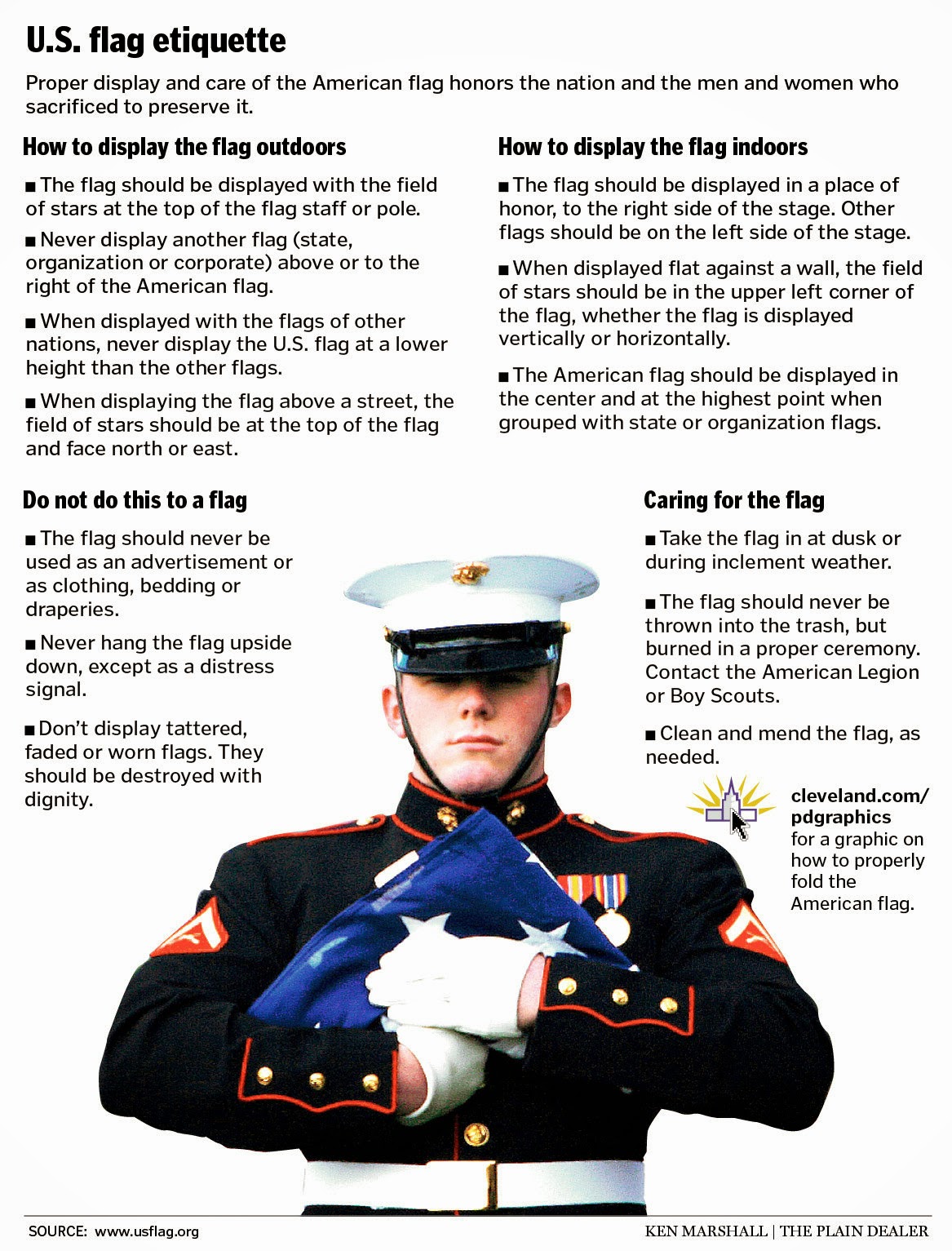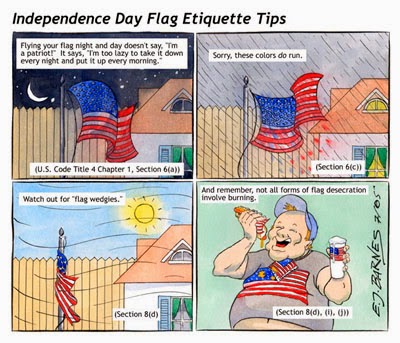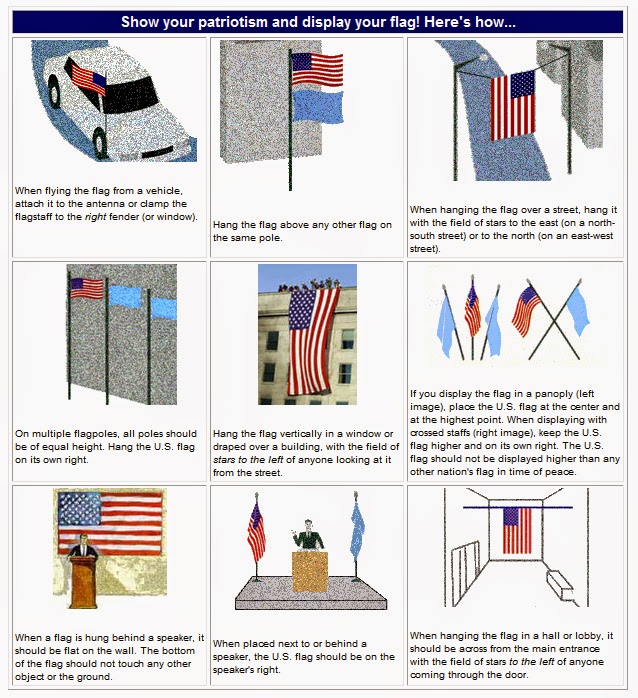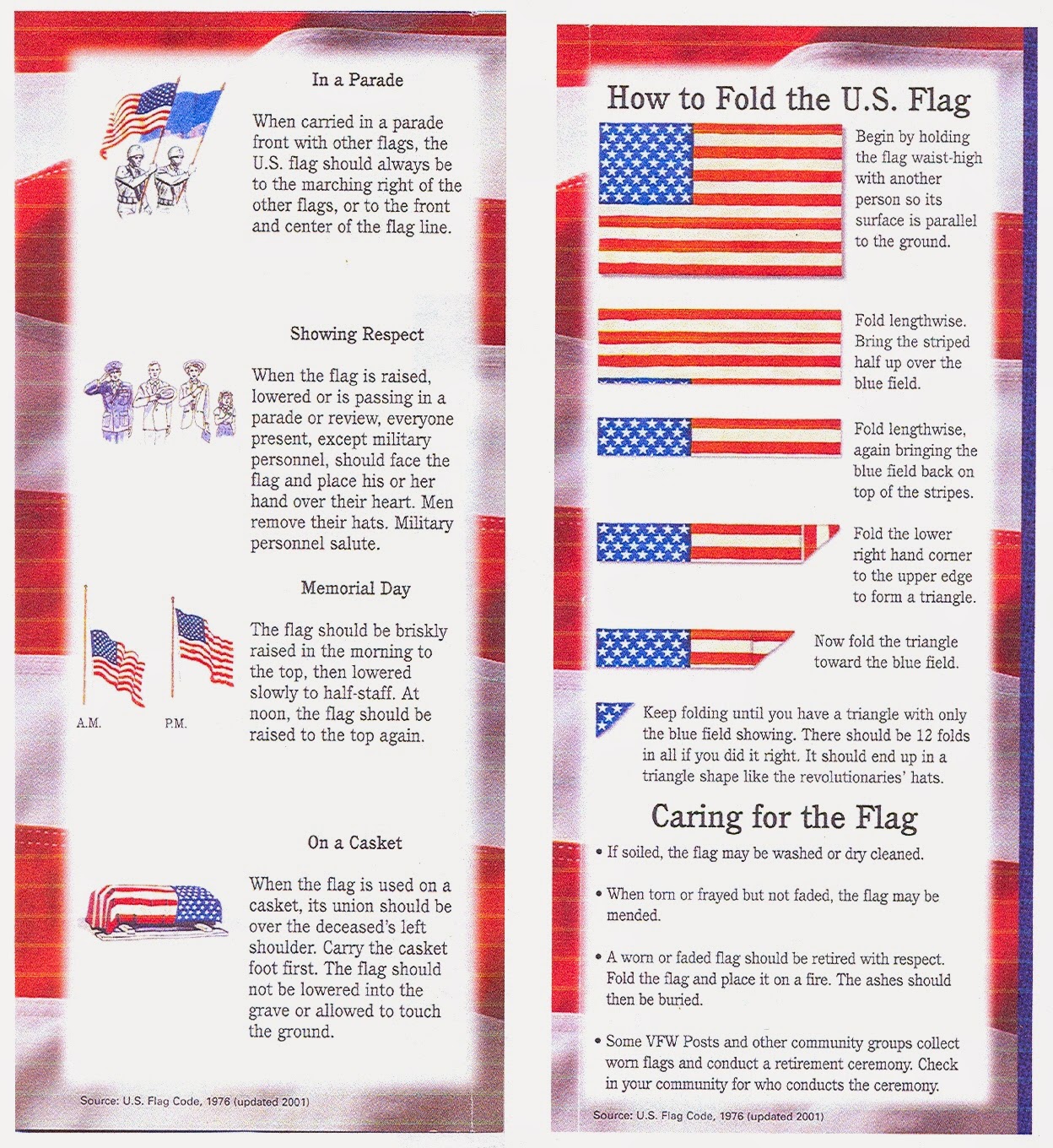
The flag of the United States and the topic of independence are usually standard information for Americans. Many are being taught the different parts of the flag in early days of school, the rules of flying the flag or flag etiquette is often disregarded. For this reason, it is pretty common to see in newspapers accounts on reversed flags and the like.
On December 22, 1942, a public law was approved by the Congress for the purpose of putting into code and emphasizing rules and customs pertaining to the display and us of the flag of the USA by civilians, civilian groups, and organizations not required to conform to regulations promulgated by departments of the government of the US. In general terms it set forth the following rules:
The flag is generally displayed from sunrise to sunset on buildings and fixed flagstaffs in the open, but in some patriotic sites (memorials, historical shrines, or cemeteries) it flies through the night as well, either by custom or ordinance.
The flag should be hoisted in a brisk manner and lowered slowly and ceremoniously. When the weather is inclement the flag should not be displayed. When weather permits, flag display is encouraged on New Year's Day, Inauguration Day, Lincoln's Birthday, Washington's Birthday, Army Day, Easter, Mother's Day, Memorial Day (half-staff until noon), Flag Day, Independence Day, Labor Day, Constitution Day, Columbus Day, Navy Day, Veteran's Day, Thanksgiving Day, Christmas Day, and such other days as may be proclaimed by the president of the US; the birthdays of the states (dates of admission); and on state holidays. Many states have laws requiring the display of the US on additional occasions within the state.
Flag should be on or near the main building of all public institutions, on or near all school buildings on school days, and in or near all polling places on election days.
When carried in a procession with another flag or flags, the flag of the US should be either on the marching right, that is the flag's own right, or, if there is a line of other flags, in front of the center of that line. When on a float in a parade, the flag should be displayed from a staff.
The flag should never be draped over the hood, top, sides, or back of the vehicle or of a railroad train or boat. When the flag is displayed on a motorcar, the staff should be fixed firmly to the chassis or clamped to the radiator cap. No other pennant or flag should be placed above or, if on the same level, to the right of the flag of the US, except during church services conducted by naval chaplains at sea, when the church pennant may be flown above the flag.











0 comments:
Post a Comment